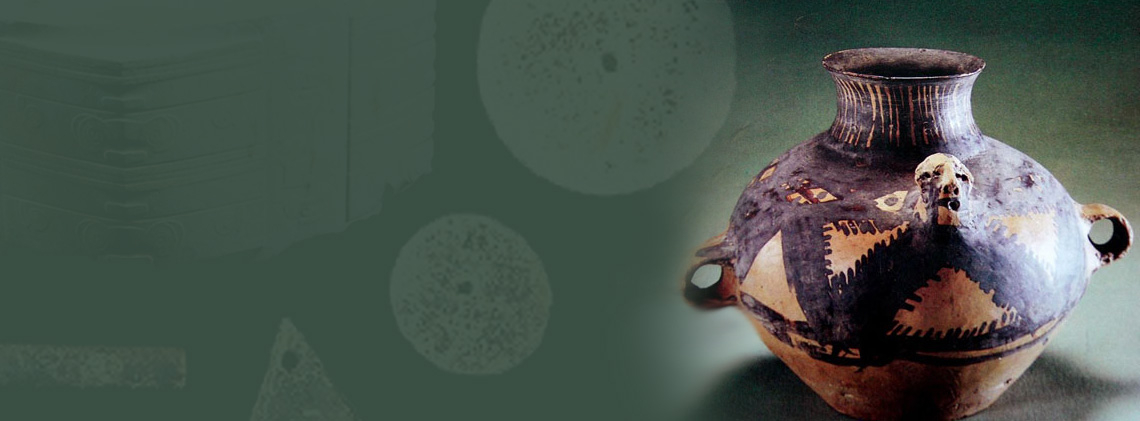
Chinese Primitive Art
Splendid
Chi Culture
Topic
Chinese Primitive Art
Chinese primitive art includes crafts such as stoneware, jade objects, bone pieces, and earthenware, as well as statues and stone carvings with sculptural significance, rock paintings, and the images on painted ceramics.
Chinese primitive art is widely distributed, from the Kunlun Mountains in the west to Taiwan in the east, from Inner Mongolia in the north to Hainan Island in the south. Primitive art remains in many diverse styles can be found in all of these areas. Regional differences are obvious, and multiple primitive art centers have been formed, which include the Yellow River valley, the Yangtze River valley, and the Liao River valley. Over a period of time these regions gave birth to art of a unique Chinese character.
The earth was formed more than 4.6 billion years ago; the human race evolved from the anthropoids just more than 3 million years ago. The origins of primitive art can be traced back as far as the existence of humans, and can be classified into four categories: production, pictographic language, spirit medium arts, and imitations of nature.
Material production was the primary need of human existence. The aesthetic ability of humans was cultivated during the process of making tools. Therefore, practicality came before aesthetic considerations in the earliest forms of primitive art.
Pictographic language refers to the pictographs and the spoken language used for communication before the invention of written language. Verbal communication was handed down by word of mouth, and its scope was very limited. However, communication using pictographs was not limited to time, place, objects, or other restrictions. If the pictograph looked like a certain object, one could clearly see a glance what it meant.
Because of low productivity in primitive society, humans were unable to withstand the threats from the nature, and were unable to explain natural phenomena from a scientific perspective, and thus they attributed all things that they were unable to explain to gods or spirits. This is what is meant by spirit medium arts. Under such circumstances, primitive tribes often performed ceremonies presided over by spirit mediums. Many primitive art works handed down to this day were products of these spirit medium rites.
Imitation is a human instinct. During the process of imitation, humans improved or enhanced their imitative skills when portraying certain objects. As a result, imitation promoted the progress of society. In this way, primitive art reflects primitive people’s sense of imitation.
Almost all activities undertaken by humans at that time were done for the sake of survival. Practicality became a basic feature of primitive art. For example, the painted pottery (earthenware) basin with fish and toad designs excavated from Jiangzhai, Xi’an, Shaanxi, was used as a water or food container. The basin with such designs could also be used to foster knowledge of reproduction in later generations. Thus, the toad represented the yin or the female, and the fish represented the yang or the male. However, some Chinese primitive art also had chaotic and mystical aspects, meaning that it had features that were unclear or a meaning that could not be clearly understood. Nevertheless, everything in reality had its own organic regularity. It is only that one cannot always explain some of the hidden meaning of the designs. For example, what does the animal design on a jade adze of the Longshan culture unearthed in Shandong mean? What does the salamander design featured on a red earthenware vase (ping) excavated from Gansu mean? These are still unsolved mysteries even today. The way of thinking between early humans and modern people are quite different in terms of the level of knowledge and artistic expression. Early humans’ creative works roughly resembled the objects that they intended to portray; they could not make close graphic depictions of the objects. However, when early humans delineated an object, their true intention was not to depict the object itself, but rather convey the implied meaning behind the object. Thus, primitive art is both concrete and abstract.
Although primitive art is simple and crude, the rich content of life the art portrayed, the organic regularity created in the art, and the gradual improvement of the drawing technique it perfected—all of these have provided an inexhaustible treasure for later ages.



